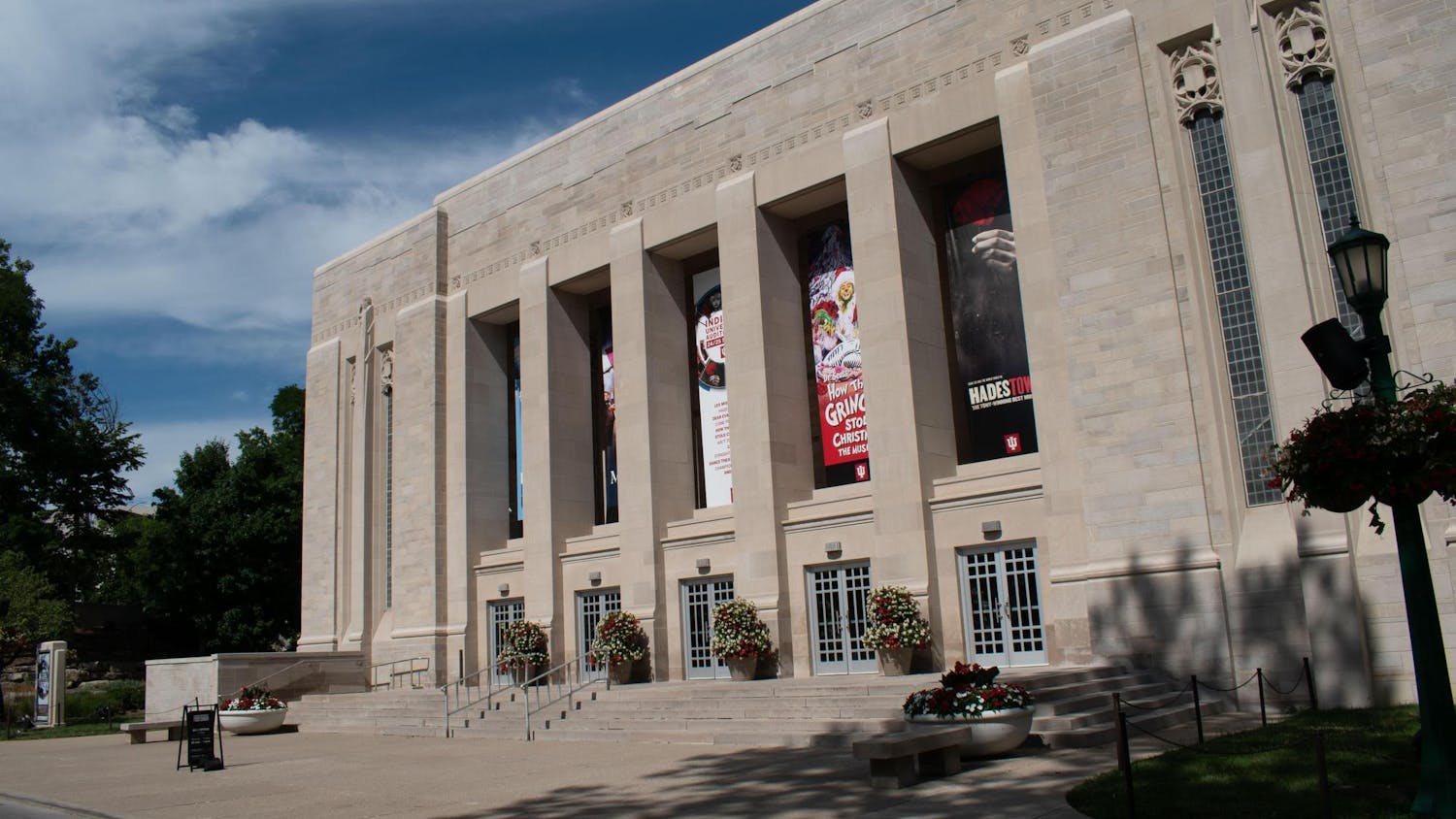When he was a college student, Ken Zuckerman discovered traditional Indian music. His life changed forever after that momentous experience.\nZuckerman and celebrated musician Anindo Chatterjee will perform at 8 p.m. tonight at Auer Hall.\nChattarjee, who has received numerous awards including the Sangeet Natak Academy Award in 2003, which is an award bestowed by the President of India to Indian musicians and artists of incredible talent, plays tabla, a set of Indian drums with a very melodic tone and which produces a variety of different pitches.\nIndian classical music is a vital part of Indian culture. IU professor Lewis Rowell, a specialist in Indian music, sees it as a near perfect reflection of ancient tradition. \n"It is really a continuous tradition, one where the past is truly alive in the present," Rowell said. "It survived all the historical upheaval bound to occur in any country unscathed."\nIt is obvious with musicians like Zuckerman, who is a native of Philadelphia, that it is not a tradition restricted to India. A highly regarded sarod player, Zuckerman discovered Indian music while he was studying at Grinell College in Iowa. There he had the opportunity to hear sarod player Ali Akbar Khan in concert. The sarod is a stringed instrument somewhat similar to the Western lute. \nEven after just one performance, Zuckerman was hooked. He went to study at the Ali Akbar Khan College of Music in California for the summer. There he discovered a whole new path.\n"I found (in Indian music) the music I had been searching for," Zuckerman said. "I had always been interested in improvising, and I loved to compose, and in Indian music I found all these possibilities already built into a single tradition."\nImprovisation is a very important part of Indian music, but this open-ended form can have many results. While a concert like the upcoming one will stay well within a few hours, when the performers are truly inspired, individual pieces can become immense works of music. \nRowell recalled a Ravi Shankar concert he attended in India in 1975. \n"The performers arrived at about 10:30 at night, and when I left at about 4:30 in the morning, they were still going strong," Rowell said. "It was an amazing piece of work."\nThe learning process for Indian classical music is very different than the piano lessons so many students in America have taken. A musician's teacher, or guru, is central to your experience with the instrument.\n"Your guru teaches you everything," Zuckerman said. "It's hugely important because there are no libraries where you can go and get the music -- you must get your material straight from your teacher's mouth."\nThis approach can be overwhelming for a student, since Indian music has many different levels of rules. There are thousands of ragas, or scales, that each serve a different purpose, and the cyclic rhythms don't necessarily divide up into evenly measured pieces.\nZuckerman's guru, Khan, had a particular way of teaching his many students. \n"I would call it a holistic method, one where he throws everything at you all at once," Zuckerman said. "The piece he's playing gives you the raga and the rhythm, and since he's composing most of it on the spot, it gives you insight into that process as well. It put the theory into a living context immediately."\nSince Khan would also tell stories as he played, his students would be exposed to the history of the culture along with its music.\nLearning to play Indian music is a long and painstaking process, often taking decades to reach true mastery. This can be very daunting to potential students.\n"I didn't realize at first how long it would take," Zuckerman said. "It's kind of lucky because if I had I might have found something else to do."\nAlthough it is a difficult process, it does not stop everyone. Several IU students became exposed to classical Indian music in similar fashion to Zuckerman.\nBen Jacob, a composition master's student, got involved in Indian music when he was 19 while taking a world music class. He bought a sitar soon thereafter and started learning to play. \nPercussion master's student Pat Hernly also discovered Indian music in college, while playing percussion in the Indian Music Ensemble at Miami University of Ohio. The director of that ensemble, Srinivas Krishnan, became Hernly's teacher and invited him to study in India. \nHernly's attraction to Indian percussion came from a diverse background. \n"I was doing a lot of marching percussion," Hernly said. "And listening to a lot of progressive rock music, stuff with odd time signatures." \nThese odd rhythms helped Hernly in learning the difficult and sometimes uneven Indian rhythmic patterns.\nThe Beatles worked with world famous sitar player Ravi Shankar on their album "Sergeant Pepper's Lonely Hearts Club Band," rocketing the Indian sound into the American mainstream. \nThis newfound popularity of Indian classical music was two-sided. It sparked a new tradition of the fusion of Indian classical music with other genres. These collaborations are still happening today, with groups like Global Rhythms, the new name of the ensemble directed by Srinivas Krishna at Miami of Ohio. It is an ensemble devoted to using influences from many cultures and allowing students to explore how each can be combined to create truly great music. \nJust as The Beatles used Indian music back in the '60s, popular music groups today use the same sounds. Ozomatli, an Afro-Cuban hip-hop group, uses tabla extensively in their recordings. \nWith this type of popular Indian music it is easy to forget that it is a fusion, and is not in keeping with the traditional styles of classical Indian music. Fusion music is wonderful in its ability to expose a wide audience to a variety of cultures, but to truly understand a culture's musical history, you need to go back to the music's roots -- and those lie in the classical music tradition.\n-- Contact staff writer Claire Blaustein at cblauste@indiana.edu.
A sound tradition
Classical Indian musicians to perform at Auer Hall tonight
Get stories like this in your inbox
Subscribe





